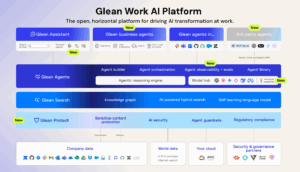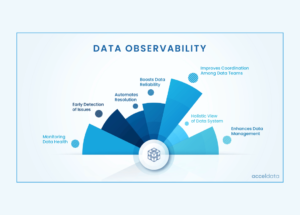
In today’s fast-paced digital world, businesses are generating an immense amount of data every day. The rapid growth of this data has led to an increased demand for real-time data processing and data warehousing. With the help of these technologies, businesses can efficiently process and store large amounts of data, making it easier to analyze and make informed decisions.
Real-time data processing refers to the immediate analysis and response to data as it is generated. It allows businesses to respond to changing conditions in near real time and make quick decisions.
For example, a retailer can use real-time data processing to monitor inventory levels, customer behavior, and sales trends to adjust prices and promotions in real time. This enables the retailer to quickly respond to changes in demand and optimize its operations.
Data warehousing, on the other hand, refers to the storage and management of large amounts of data. It is a key component of business intelligence and helps organizations to consolidate data from multiple sources into a single, centralized repository. This enables organizations to gain a comprehensive view of their operations and make informed decisions based on data-driven insights.
The rise of real-time data processing and data warehousing has been driven by several factors, including the growth of cloud computing, the increasing availability of big data technologies, and the need for businesses to stay competitive in today’s fast-paced digital world.
Cloud computing has made it easier for businesses to access and process large amounts of data in real time. Cloud-based data warehousing solutions offer scalable and flexible storage options, allowing businesses to store and analyze vast amounts of data without the need for expensive on-premise hardware.
Additionally, cloud computing has reduced the cost and complexity of deploying and managing data warehousing solutions, making them more accessible to a wider range of businesses.
Big data technologies, such as Hadoop, Spark, and NoSQL databases, have also contributed to the rise of real-time data processing and data warehousing. These technologies make it possible to process and store large amounts of structured and unstructured data in real time, allowing businesses to gain deeper insights into their operations.
Additionally, big data technologies are designed to work in distributed environments, making it easier for businesses to process data at scale.
The need for businesses to stay competitive in today’s fast-paced digital world has also driven the rise of real-time data processing and data warehousing. Businesses that can quickly analyze data and make informed decisions are more likely to stay ahead of the curve and achieve their goals.
With the help of real-time data processing and data warehousing, businesses can gain a competitive edge by quickly responding to changes in the market, optimizing their operations, and making data-driven decisions.
In conclusion, the rise of real-time data processing and data warehousing is transforming the way businesses manage and analyze data. These technologies are making it easier for organizations to process and store large amounts of data in real time, enabling them to gain deeper insights into their operations and make informed decisions based on data-driven insights.
With the growth of cloud computing and big data technologies, the future of real-time data processing and data warehousing looks bright, and it is likely that we will continue to see increased adoption of these technologies in the years to come.
Please join our Newsletter to be updated with our content and check our Blog for more articles like this.
Don’t forget to share it on social media channels with your friends!





